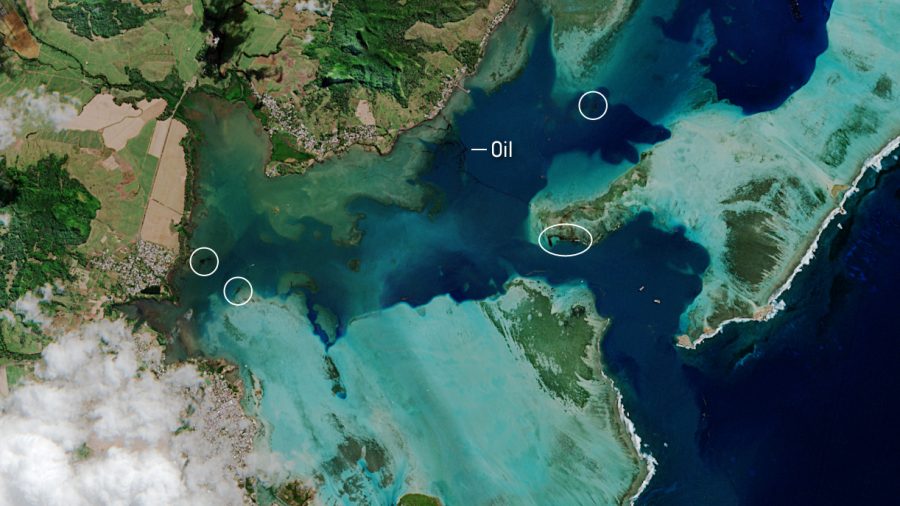NAIROBI—Mauritian volunteers fished dead eels from oily waters on Tuesday as they tried to clean up damage to the Indian Ocean island’s most pristine beaches after a Japanese bulk carrier leaked an estimated 1,000 tons of oil.
The ship, MV Wakashio, owned by Nagashiki Shipping and operated by Mitsui OSK Lines Ltd., struck a coral reef on Mauritius’ southeast coast on July 25, and began leaking oil last week, raising fears of a major ecological crisis.
Activists told Reuters that dead eels were floating in the water and dead starfish washed in the sticky black liquid. Crabs and seabirds are also dying.
“We don’t know what may happen further with the boat, it may crack more,” said clean up volunteer Yvan Luckhun.
The MV Wakashio is still holding some 2,000 tonnes of oil and it is expected to eventually break up, Prime Minister Pravind Jugnauth said late on Monday, warning that the country must brace for the worst.
Tourism is a key part of the Mauritius economy and the government, which has declared a state of emergency due to the spill, is working with former colonial ruler France to try to remove the oil.

The spill has set back two decades’ worth of restoring the natural wildlife and plants in the lagoon, which started after the government banned sand harvesting in the area back in 2000, said Vikash Tatayah, conservation director at Mauritius Wildlife Foundation, a non-governmental organization.
The fragmentation of the oil in the sea is expected to damage corals when the heavier particles in the oil settle on them, he said, adding that the steps taken by the government to prevent the disaster are also being scrutinized.
“There is some anger and some criticism from the civil society that the government may have taken too much time to respond,” he said. The ship was grounded for nearly two weeks before it started leaking oil.
There was no immediate comment from Mauritian government officials.
Mitsui OSK Lines said in statement: “We will do our utmost towards resolving the situation quickly.” It did not provide any details.
By Duncan Miriri


